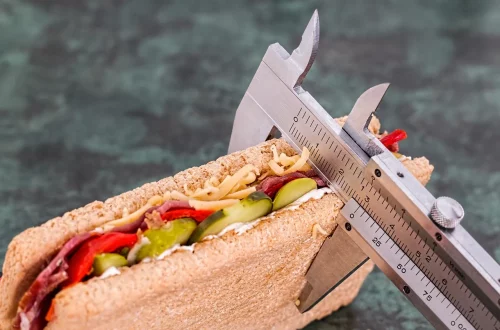
Why Do Dogs Chew Their Nails? Understanding the Behavior and Solutions
Understanding the behavior of dogs can often feel like deciphering a complex language. Among the various quirks that can arise, nail chewing is a behavior that many pet owners encounter. This habit may seem innocuous at first glance, but it can reveal deeper issues that warrant attention. Dogs, like humans, may exhibit behaviors driven by anxiety, boredom, or even underlying health concerns. Observing these behaviors closely can provide insights into your furry friend’s emotional and physical well-being.
Nail chewing can be a perplexing behavior for dog owners. It may be dismissed as a mere nuisance or playful habit, but it’s essential to understand that this action can signify a range of emotions and conditions. Just as we might bite our nails in stressful situations, dogs may resort to chewing their nails for similar reasons. This behavior can also stem from a need for self-soothing, a response to environmental stressors, or even a response to discomfort related to their nails or paws.
To ensure the well-being of your canine companion, it is crucial to delve deeper into the reasons behind nail chewing. By doing so, you can better address the underlying issues and foster a healthier environment for your pet. Ultimately, understanding why dogs chew their nails can pave the way for effective solutions that can enhance their quality of life.
Common Reasons Dogs Chew Their Nails
There are several reasons why dogs may engage in nail chewing, and understanding these can help pet owners address the issue effectively. One of the most prevalent causes is anxiety. Just as humans might find comfort in repetitive behaviors when stressed, dogs can find solace in chewing their nails. This behavior can be particularly noticeable during stressful situations, such as thunderstorms, fireworks, or changes in their environment. If your dog is prone to anxiety, it’s essential to recognize the triggers and work on desensitizing them to these stressors.
Boredom is another significant factor contributing to nail chewing. Dogs require regular mental and physical stimulation to thrive. When they lack sufficient exercise or engagement, they may resort to chewing their nails as a way to alleviate their boredom. Providing interactive toys, regular walks, and playtime can help alleviate this issue. Ensuring that your dog has a fulfilling daily routine can significantly reduce the likelihood of nail chewing due to boredom.
Additionally, some dogs may chew their nails due to physical discomfort. This could stem from various issues, such as ingrown nails, infections, or allergies. If a dog experiences pain or irritation in their paws, they might instinctively chew to relieve the discomfort. Regular grooming and nail trimming can help prevent such issues. It’s vital to monitor your dog’s nails and overall paw health and consult your veterinarian if you notice any abnormalities or signs of distress.
Lastly, habit formation can also play a role. If a dog begins chewing their nails at a young age or during a specific incident, they may continue the behavior out of habit, even if the initial cause has been resolved. Breaking this cycle often requires consistent training and redirection.
How to Discourage Nail Chewing
Once you’ve identified the potential reasons behind your dog’s nail chewing, it’s crucial to take proactive steps to discourage this behavior. One effective method is to redirect the behavior through positive reinforcement. When you catch your dog chewing their nails, gently interrupt them and redirect their attention to a toy or a different activity. When they engage with the toy instead, reward them with treats or praise. This approach helps your dog associate positive experiences with alternative behaviors.
Another strategy is to ensure your dog gets enough mental and physical exercise. Regular walks, playtime, and engaging activities can significantly reduce boredom and anxiety, ultimately leading to decreased nail chewing. Consider incorporating puzzle toys or interactive games that challenge your dog’s mind and keep them occupied.
If anxiety is a primary concern, creating a safe and calming environment can help alleviate stress. Designate a quiet space where your dog can retreat when they feel overwhelmed. Consider using calming aids, such as anxiety wraps or pheromone diffusers, which can help soothe your dog during stressful situations.
In some cases, it may be beneficial to consult with a professional dog trainer or behaviorist. These experts can provide tailored strategies to address your dog’s specific needs and help you implement a comprehensive training plan.
Moreover, maintaining regular veterinary check-ups is essential. If you suspect that your dog’s nail chewing is related to physical discomfort, it’s crucial to seek professional advice. Your veterinarian can examine your dog’s paws and nails for any underlying health issues that may require treatment.
Maintaining Healthy Nails and Paws
Preventive care plays a vital role in maintaining your dog’s nail health and overall paw condition. Regular grooming is essential, as it helps keep nails trimmed and prevents them from becoming overgrown or ingrown. Overgrown nails can cause discomfort and lead to further issues, prompting your dog to chew on them. If you’re unsure about proper nail trimming techniques, consider seeking guidance from a professional groomer or your veterinarian.
In addition to trimming, regular inspections of your dog’s paws are crucial. Check for signs of irritation, redness, or any foreign objects lodged between their toes. If you notice anything unusual, consult with your veterinarian promptly. Keeping your dog’s paws clean and well-groomed can help prevent infections and other problems that might lead to nail chewing.
Furthermore, consider the surfaces your dog walks on regularly. Rough or abrasive surfaces can cause wear and tear on your dog’s nails, leading to discomfort. Ensuring your dog has access to softer surfaces, both indoors and outdoors, can help maintain their nail health.
Hydration and nutrition also play a significant role in the condition of your dog’s nails. A balanced diet rich in essential nutrients will promote strong and healthy nails. Always consult with your veterinarian to ensure your dog’s dietary needs are met.
Lastly, consider using protective products, such as paw wax, especially during harsh weather conditions. These products can help shield your dog’s paws from extreme temperatures and rough terrain, reducing the likelihood of discomfort and subsequent nail chewing.
When to Seek Professional Help
While many cases of nail chewing can be addressed with simple behavioral modifications, there are instances when professional help is necessary. If your dog’s nail chewing persists despite your best efforts to redirect the behavior, it may be time to consult with a veterinarian or a certified animal behaviorist.
Persistent nail chewing can indicate underlying health issues that require medical attention. Conditions such as allergies, skin infections, or even anxiety disorders may necessitate a professional diagnosis. A veterinarian can provide appropriate treatment options, including medication or behavioral therapy, tailored to your dog’s specific needs.
Additionally, if you notice any changes in your dog’s behavior, appetite, or overall health alongside nail chewing, seek veterinary advice promptly. Early intervention can often prevent more severe complications and help your dog return to a state of well-being.
In conclusion, understanding why dogs chew their nails is crucial for their overall happiness and health. By identifying the underlying causes and implementing effective strategies, you can help your furry friend overcome this behavior and lead a more fulfilling life.
*This article is intended for informational purposes only and does not constitute medical advice. For any health concerns regarding your pet, please consult a qualified veterinarian.*




